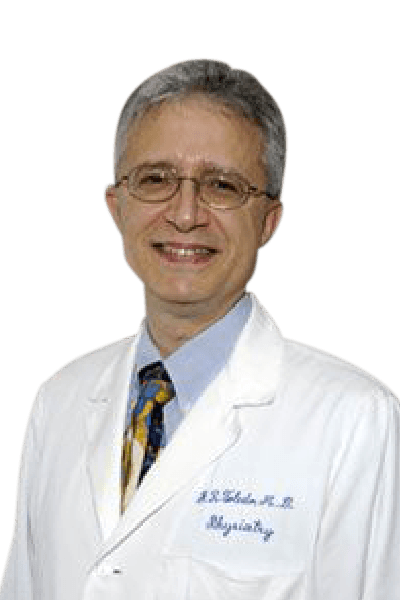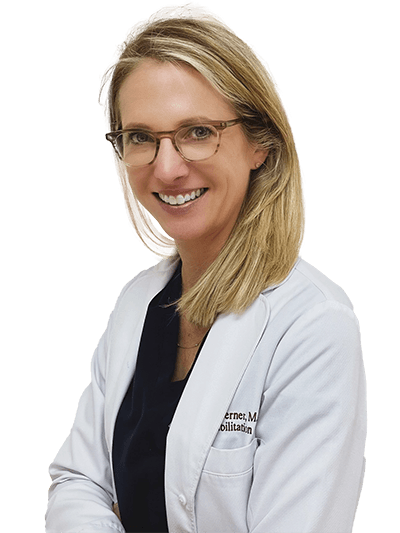Rehabilitation Medicine
Physical medicine and rehabilitation (PM&R), also known as physiatry or rehabilitation medicine, aims to maximize the functional ability and quality of life to those with physical impairments or disabilities. Physiatrists lead the rehabilitation care team in designing treatment programs to achieve the maximum independence possible in the patient’s activities of daily living.
PM&R physicians and Nurse Practitioners practice in a variety of clinical settings, including inpatient and outpatient facilities. They have a broad range of knowledge including musculoskeletal, neurological, rheumatological and cardiovascular systems. Some of the common diagnoses seen by inpatient physiatrists include spinal cord injury, brain injury (traumatic and non-traumatic), stroke, multiple sclerosis, polio, and musculoskeletal rehabilitation. Inpatient physiatrists are often trained using collaborative team skills and work with social workers and other allied health therapists, which may include physical, occupational and speech therapists, to manage these issues.
Mount Sinai’s team of outpatient physiatrists manage nonsurgical conditions including orthopedic injuries, spine-related pain and dysfunction, occupational injuries and overuse syndromes, neurogenic bowel/bladder, pressure sore management, spasticity management, and chronic pain.
Our outpatient physiatrists work in multidisciplinary groups consisting of other physiatrists, orthopedic surgeons and/or neurosurgeons.
Mount Sinai’s rehab program includes the following types of therapies to help patients regain function:
- Physical therapy helps people address pain or impaired movement caused by an injury, a medical condition, or a medical procedure, such as surgery or radiation treatment. Physical therapy helps patients strengthen parts of their bodies that may be weakened due to not moving for a period of time, improve postsurgical outcomes by managing pain, improve range of motion, and minimize the effect of scar tissue that can sometimes impede function or even cause pain. Sometimes physical therapy helps patients “relearn” how to use parts of their bodies that have been injured or compromised.
- Occupational therapy helps people improve their ability to handle the activities of daily living at home, work, or school. Occupational therapy can help patients with everyday tasks like getting dressed, bathing, writing, or using a computer. Not only can occupational therapy give patients independence to live more freely and safely, but it can reduce the risk of future injuries through training and compensatory strategies education.
- Speech therapy focuses on the patient’s ability to communicate, express their ideas in an organized manner, and produce and understand speech. Their approach may include exercises, as well as strategies focused on connecting thinking with talking. Speech therapists also work with patients who have swallowing difficulties, which can affect their ability to talk, eat, and drink.
Our Physicians
Jose R Toledo, MD
- Physical Medicine & Rehab
- Mount Sinai Medical Center (Main Campus)
- 305.674.2121
- Mount Sinai Medical Center (Main Campus)
- 305.672.1256



